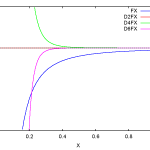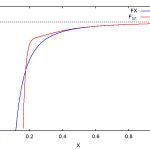This is a neat solution, and I we can proceed to writing up UFT399, followed by a review paper UFT400.
Complete Expression for the Spin Connection
To: Myron Evans <myronevans123>
This procedure seems to be unnecessisarily complicated. We have
<E(vac)> = <E(vac)>(2) + <E(vac)>(4) + …
and
<phi(vac)> = <phi(vac)>(2) + <phi(vac)>(4) + …
With
bold <E(vac)> = bold omega <phi(vac)>
it follows directly
omega_X = <E_X(vac)> / <phi(vac)> = (<E_X(vac)>(2) + <E_X(vac)>(4) + …) / (<phi(vac)>(2) + (<phi(vac)>(4) + …)
For the oscillatory example it follows that all degrees of derivatives only differ by a factor of k, and evaluating the above equation gives
omega_X = k * tan(k*X)
to all degrees of approximation.
Horst
Am 27.01.2018 um 14:13 schrieb Myron Evans:
This note completes Note 399(2) by calculating the complete spin connection components, exemplified by the X component. It is shown that all orders of <delta r dot delta r> can be eliminated so there is no need to calculate them explicitly, despite the fact that they are the basis for the theory. Infinities in the spin connection mean that the vacuum can transfer infinite amounts of energy to a well designed circuit. The complexity of the tensor Taylor series is no problem when computer algebra is used. So UFT399 can be written up on the basis of these three notes and the work completed by Horst for Section 3. Note that the vacuum being considered is the Lamb shift vacuum.

